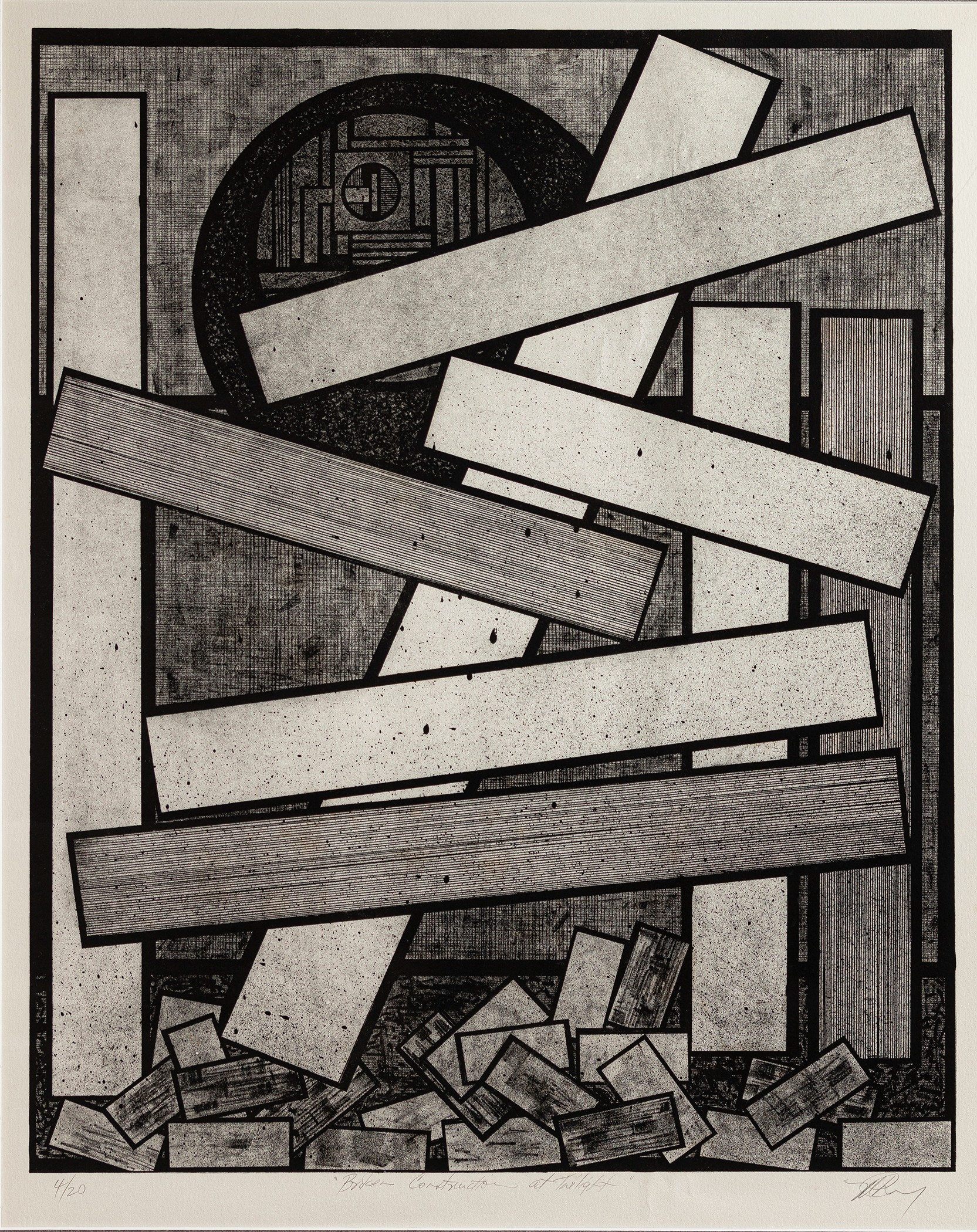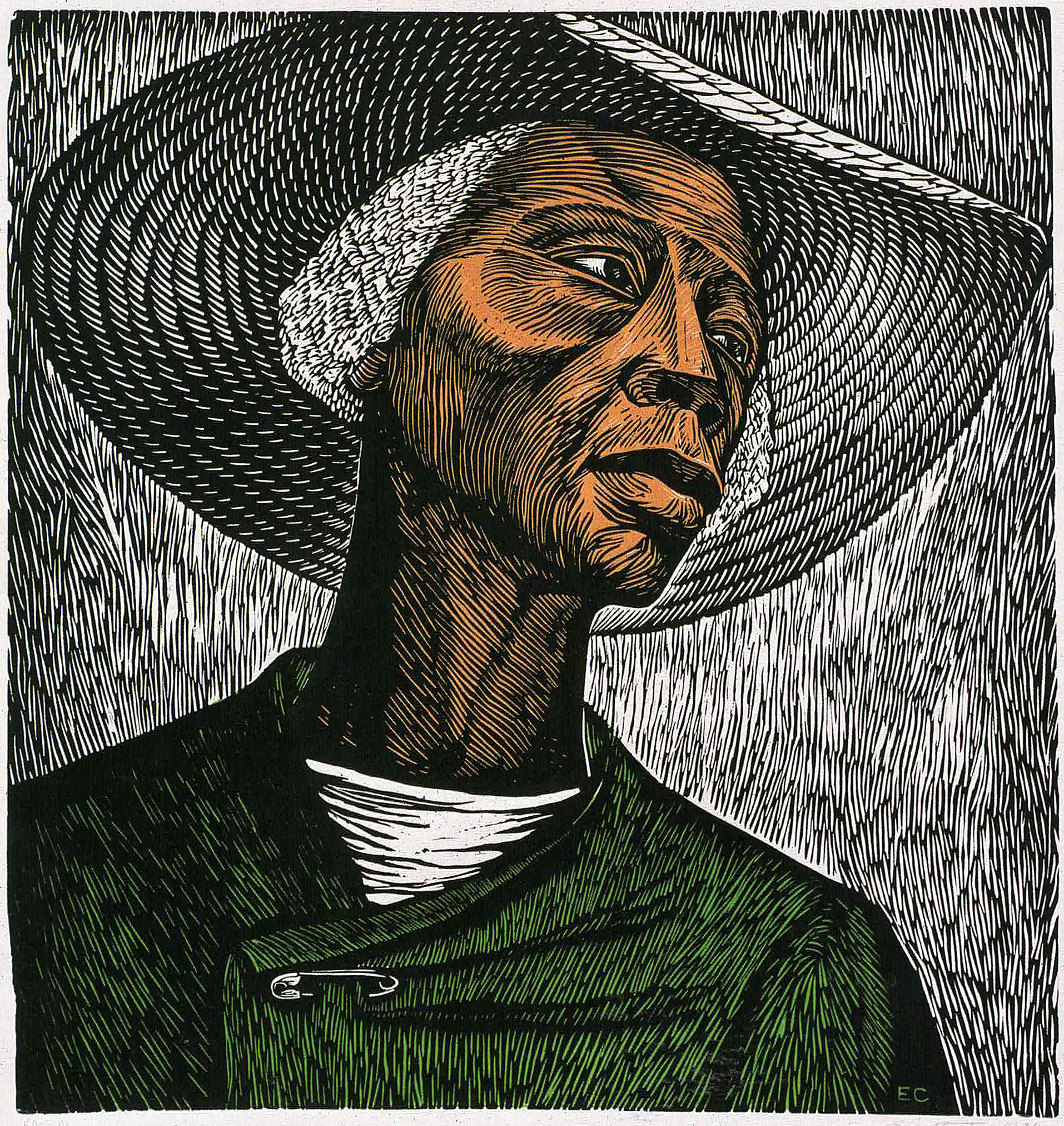Mavis Pusey was best known for her hard-edge, non-representational images. This was very much her singular focus throughout her entire career.
Pusey was born in Jamaica in 1928. Her parents died when she was young. An aunt taught her to sew, and her first job was cutting fabric in a garment factory in Kingston, Jamaica. When she was 18, Pusey went to NY to study at the Traphagen School of Fashion. Due to financial constraints she began attending classes at the Art Students League instead, where she studied painting and printmaking over the next four years. One of her teachers was Will Barnet.
When her student visa expired, Pusey went to London, and then Paris, where her first solo exhibition was held at Galerie Louis Soulanges in 1968. When she returned to NY, her work Dejyqea (oil/canvas, 72 x 60 in.) was included in the important exhibition, Contemporary Black Artists in America, held in 1971 at the Whitney Museum of American Art, NY. She worked with Robert Blackburn at his workshop for three years and was struck by the energy and constant movement of the city. Many of her prints from this period reflect a focused interest on the city’s construction. Pusey also taught at various institutions throughout her career including Rutgers University and the New School for Social Research. She moved to Virginia later in her career.
In 2017, her work was included in the exhibition, Magnetic Fields: Expanding American Abstraction, 1960s to Today. It was the first U.S. presentation dedicated exclusively to the formal and historical dialogue of abstraction by women artists of color. Her work will also be the subject of a major exhibition at the Birmingham Museum of Art, AL.
Pusey’s work is found in the collections of the National Museum of African American History and Culture, Washington D.C.; Museum of Modern Art, NY; Studio Museum in Harlem, NY; and the Birmingham Museum of Art, AL.




